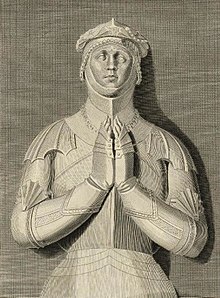
Jasper Tudor, Duke of Bedford, was the uncle of King Henry VII of England and a leading architect of his nephew's successful accession to the throne in 1485. He was from the noble Tudor family of Penmynydd in North Wales.

Dafydd ap Llewelyn ap Hywel, better known as Dafydd Gam, anglicized to David or Davy Gam, was a Welsh warrior, a prominent opponent of Owain Glyndŵr. He died at the Battle of Agincourt fighting for Henry V, King of England in that victory against the French.
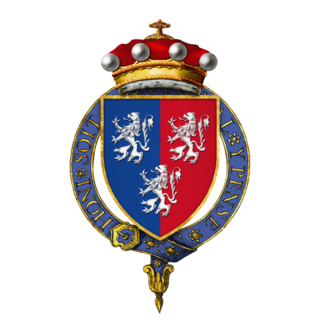
William Herbert, 1st Earl of PembrokeKG, known as "Black William", was a Welsh nobleman, soldier, politician, and courtier.
William Herbert, 2nd Earl of Pembroke was an English nobleman and politician.

Abergavenny Castle is a ruined castle in the market town of Abergavenny, Monmouthshire, Wales, established by the Norman lord Hamelin de Balun c. 1087. It was the site of a massacre of Welsh noblemen in 1175, and was attacked during the early 15th-century Glyndŵr Rising. William Camden, the 16th-century antiquary, said that the castle "has been oftner stain'd with the infamy of treachery, than any other castle in Wales."
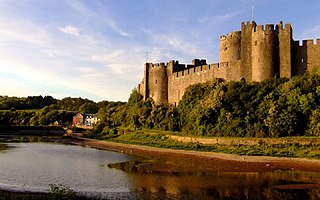
Gerald de Windsor, aliasGerald FitzWalter, was an Anglo-Norman lord who was the first Castellan of Pembroke Castle in Pembrokeshire. Son of the first Constable of Windsor Castle, and married to a Welsh Princess, he was in charge of the Norman forces in south-west Wales. He was also steward and governor for the Norman magnate Arnulf de Montgomery. His descendants were the FitzGerald dynasty, as well as the FitzMaurice, De Barry, and Keating dynasties of Ireland, who were elevated to the Peerage of Ireland in the 14th century. He was also the ancestor of the prominent Carew family, of Moulsford in Berkshire, the owners of Carew Castle in Pembrokeshire and of Mohuns Ottery in Devon.
This article is about the particular significance of the century 1501–1600 to Wales and its people.

The Priory Church of St Mary, Abergavenny is a parish church in the centre of Abergavenny in Monmouthshire, Wales.

Sir Richard Herbert of Ewyas, Herefordshire, was a Welsh knight, gentleman, landowner, and courtier. He was an illegitimate son of William Herbert, 1st Earl of Pembroke (1423–1469), and Maud ap Howell Graunt, a daughter of Adam ap Howell Graunt (Gwynn). Richard had a full brother named George.

Sir John Prise (1501/2–1555) was a Welsh public notary, who acted as a royal agent and visitor of the monasteries. He was also a scholar, associated with the first Welsh printed publication Yn y lhyvyr hwnn. He was a Member (MP) of the Parliament of England for Breconshire in 1547; Hereford October 1553; Ludlow April 1554; and Ludgershall November 1554.

The Herbert family is an Anglo-Welsh noble family founded by William Herbert, known as "Black William", the son of William ap Thomas, founder of Raglan Castle, a follower of Edward IV of England in the Wars of the Roses. The name Herbert originated in 1461 when William was granted the title Baron Herbert of Raglan, having assumed an English-style surname in place of his Welsh patronymic, ap William.
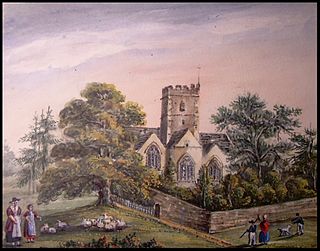
Gwladys ferch Dafydd Gam was a Welsh noblewoman. She was the daughter of Dafydd ap Llewelyn ap Hywel, otherwise known as Dafydd Gam, who was killed at the Battle of Agincourt in 1415.
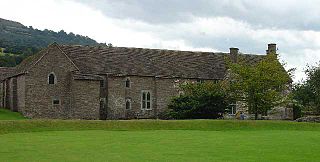
Sir Roger Vaughan of Tretower Court, was the son of Welsh noblewoman Gwladys ferch Dafydd Gam and Sir Roger Vaughan of Bredwardine, who fought and died with Gwladys's father, Dafydd Gam in the Battle of Agincourt in 1415.
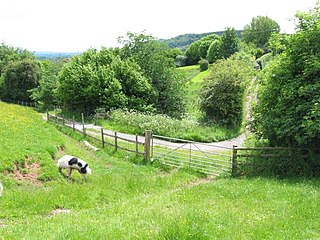
Sir Roger Vaughan of Bredwardine, also known as Roger Fychan or Roger the younger, was a Welsh gentleman, described as having possessed wealth, rank, and high respectability. Roger's seat, Bredwardine Castle, is estimated to have been a strong and formidable fortress, located on the banks of the Wye river in Herefordshire, two miles north of Moccas Court. Bredwardine Castle is thought to have furnished much of the material for the building of Moccas Court.

Sir Richard Herbert of Coldbrook Park, near Abergavenny, was a 15th-century Welsh knight, and the lineal ancestor of the Herberts of Chirbury.
Anne Devereux, Countess of Pembroke, was an English noblewoman, who was Countess of Pembroke during the 15th century by virtue of marriage to William Herbert, 1st Earl of Pembroke.

Hen Gwrt,, Llantilio Crossenny, Monmouthshire is the site of a thirteenth century manor house and a sixteenth century hunting lodge. Originally constructed for the Bishops of Llandaff, it subsequently came into the possession of the Herberts of Raglan Castle. The bishops constructed a substantial manor house on the site in the thirteenth century, which was moated in the fourteenth. The building was then adapted by the Herberts to create a lodge within their extensive hunting grounds. The lodge continued in use until the slighting of Raglan Castle in the English Civil War.
Iorwerth ab Owain was a Welsh prince of Gwynllŵg and Lord of Caerleon.

Hywel ab Iorwerth was a Welsh lord of Caerleon.

Perth-hir House, Rockfield, Monmouthshire, Wales, was a major residence of the Herbert family. It stood at a bend of the River Monnow, to the north-west of the village. At its height in the 16th century, the mansion, entered by two drawbridges over a moat, comprised a great hall and a number of secondary structures. Subsequently in the ownership of the Powells, and then the Lorimers, the house became a centre of Catholic recusancy following the English Reformation. By the 19th century, the house had declined to the status of a farmhouse and it was largely demolished in around 1830. Its ruins, and the site which contains considerable remnants of a Tudor garden, are a scheduled monument.

